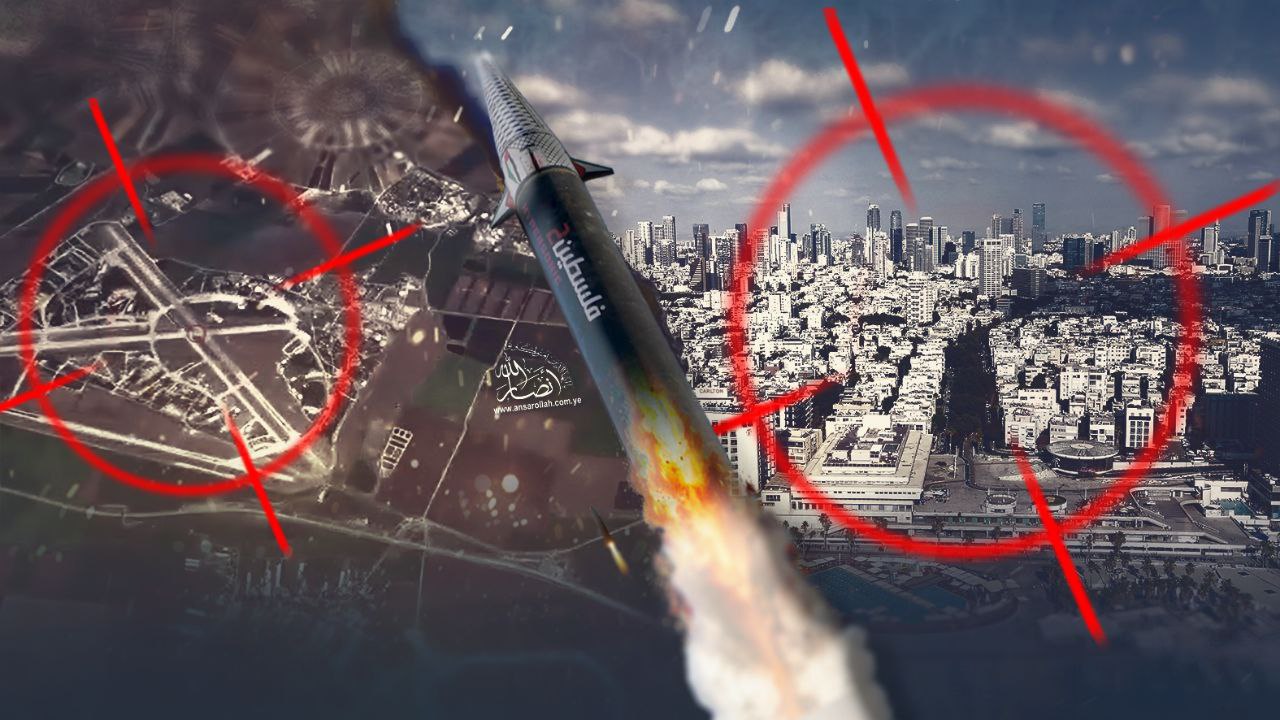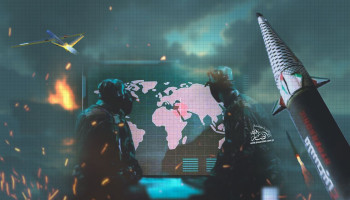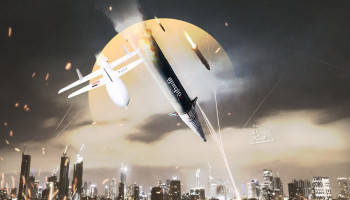Published: Muharram 8, 1447 AH
The unwavering consistency of Yemen’s support axis underscores the sincerity of a stance that is both officially declared and widely backed by the public. This determined position stands in stark contrast to the Zionist regime’s clear inability to stop or even limit its impact.
The Palestine 2 missile now dominates the skies over occupied Palestine, accompanied by the Dhu al-Fiqar and multiple drones. Together, they generate a consistent state of near-daily fear. Life comes to a halt, bomb shelters fill, and air traffic grinds to a standstill. Aircraft are forced to turn back mid-flight or hover in holding patterns — creating what is arguably the most dangerous flight corridor in the world today. Despite repeated Zionist reassurances, there is no genuine sense of safety, and major airlines remain unwilling to resume flights to and from Lod Airport. The overall environment inside the occupied territories is precisely as it should be: unfit for sustaining the occupation, and increasingly unlivable for Zionist settlers.
At the heart of the matter is a simple truth: Gaza must not — and will not — stand alone. Yemen has not abandoned it, and it never will. This intensifying support campaign is growing in both effect and momentum. Yemen continues to hold its ground with unshakable resolve, while the enemy fails to halt or even mitigate its consequences. Among those consequences is a growing disruption in the occupying entity’s so-called “national and societal security” — an entity whose very survival depends on a fragile sense of safety, now unraveling.
Across occupied Palestine, sirens wail and explosions echo as enemy military spokespersons claim interceptions. Yet fear continues to overwhelm the Zionist population. Uncertainty defines daily life, while deep psychological and economic damage continues to mount, compounding with each passing day.
Zionist reports estimate the direct economic losses caused by Yemeni attacks to be in the billions of dollars. These losses stem from the suspension of Zionist maritime operations in the Red Sea and the effective paralysis of the port of Umm al-Rashrash (Eilat). Add to this the economic burden of Yemen’s partial air blockade, and the severe infrastructure damage inflicted by direct strikes on multiple facilities since the onset of Yemen’s support operations — and the scale of impact becomes undeniable.
Yemeni Challenge, Zionist Failure
Faced with Yemen’s rising challenge, the Zionist regime’s inability becomes increasingly visible — triggering a wave of threats from across its political and military ranks. These range from Zionist “War Minister” Yoav Gallant to U.S. Ambassador Mike Huckabee in “Tel Aviv,” down to anonymous sources leaking warnings of potential future strikes against Yemen.
Zionist “War Minister” Israel Katz explicitly threatened retaliation, declaring, “Yemen’s fate will be like Iran’s,” referring to recent Israeli strikes on Iranian positions. Yet Zionist media has largely dismissed his statements as political posturing — an attempt to mask the regime’s failure to end or contain the Yemeni challenge. According to Zionist analysts themselves, such threats fall well short of matching the scale and seriousness of the Yemeni stance.
Meanwhile, Zionist media has focused on the repeated failures of the “Hetz” (Arrow) defense system, which has been unable to intercept numerous missiles in recent weeks — a failure documented by multiple internal reports.
U.S. Ambassador Mike Huckabee has also raised the possibility of using B-2 bombers against Yemen. However, many observers view these threats as hollow — especially given Washington’s earlier failures to achieve concrete results in naval confrontations with Yemeni forces, which revealed unexpectedly advanced and effective Yemeni military capabilities.
The truth is clear: while official statements from Zionist and American leaders reflect a state of emergency, they also carry a tacit admission of helplessness. The inability to counter the Yemeni threat is no longer a secret — it’s visible in every failed interception, every disrupted flight path, and every economic blow.
Reports confirming the failure of Zionist missile defenses underscore the vulnerability of their security infrastructure and call into question the credibility of their threats. With few viable options on the table — and immense risks surrounding the prospect of launching long-range air operations — the Zionist Air Force faces one of its most complex strategic dilemmas. All this is further compounded by the unknown capabilities Yemen may yet reveal — surprises that could shift the conflict’s trajectory at any moment.
Whatever the coming scenarios may be, one thing remains constant: Yemen — both officially and popularly — holds to its stance not as a tactic, but as a principle. It will not be swayed by bombing or broken by pressure. Most importantly, it does not operate according to the logic of retaliation. Yemen’s path is guided — solely and unwaveringly — by the battle for liberation.







